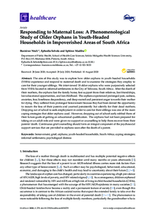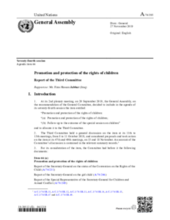Displaying 1 - 10 of 82
The study sought the socio-economic supports available for the high school adolescent girl learners from child-headed families (CHFs).
This study explored child headed households (CHH) in South Africa.
The aim of this study was to explore how older orphans in youth-headed households (YHHs) experience and respond to maternal death and to examine the strategies they employ to care for their younger siblings.
This qualitative study used a case study design to explore the manifestations of the core psycho-social deficits associated with children domiciled in child headed households.
This study explored the parenting experiences of orphaned youth heading households in resource-constrainted environments.
This report delves into the differences between boys’ and girls’ experiences through a gendered analysis of the six grave violations of children in conflict, including recruitment of children by armed forces and child abduction. The report makes reference to the vulnerabilities faced by girl heads of household or unaccompanied and separated girls on the move and calls for interventions such as family tracing and reunification, the provision of alternative care for unaccompanied and separated children, and the release and reintegration of children associated with armed forces and armed groups.
The 2019 Resolution on the Girl Child can be found on pages 7-21 of the Third Committee Report on the Promotion and protection of the rights of children. The Resolution highlights several concerns and recommendations related to children's care.
The aim of this module from the book Rights-based Integrated Child Protection Service Delivery Systems is to learn about the need for rights-based support services for children and families at risk in specific situations.
This research investigated the psychosocial-support provision for learners from child-headed households (CHHs) in five public high schools in South Africa.
The objective of this paper is to examine the situation of orphans and vulnerable children (OVC) in Dar es Salaam, Tanzania in existing alternative care systems and explore the treatment of OVC in these systems.






